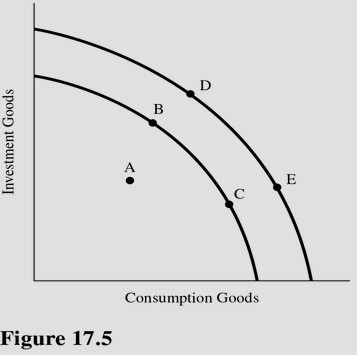 A movement from point C to point E in Figure 17.5 illustrates
A movement from point C to point E in Figure 17.5 illustrates
A. An increase in the unemployment rate.
B. The short-run opportunity cost of achieving long-run economic growth.
C. An increase in the capacity to produce.
D. A decrease in the capacity to produce.
Answer: C
You might also like to view...
A country has a comparative advantage in the production of a good if it can
A) trade off producing the good for another good. B) produce more of the good than another country. C) produce the good on and remain on its production possibilities frontier. D) produce more of the good most efficiently. E) produce the good at the lowest opportunity cost.
A negative externality can be internalized by
A. persuasion. B. the imposition of a tax. C. the assignment of property rights. D. a voluntary agreement. E. all of the above
Capitalism is based on all of the following except
A. the "invisible hand". B. the price mechanism. C. trust. D. equity.
In long-run equilibrium for a competitive firm, economic profits:
A. will be positive. B. will be negative. C. will be zero. D. may be positive, negative, or zero.